After a lot of recipe development for my last course I have a lot of little flour leftovers from various ancient grains. There was for example the packet of white Kamut flour which I bought before I decided that the ancient grain workshop would be a whole grain workshop, too. And so I decided to use the last bread baking day in the museum to cut down some leftovers and baked pure kamut bread.
The bread contains about 40% whole grain flour which is mainly added to the poolish. That allows the flour to take up a lot of water. Especially Kamut is able to soak up a lot of water – at least all the batches I worked with in the last month. Anyway it is a good Idea to start with less water and add the water while kneading – just in case. The mild flaovur of the poolish fits very well to the nutty aroma of the Kamut.

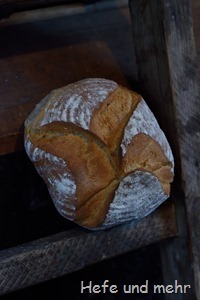
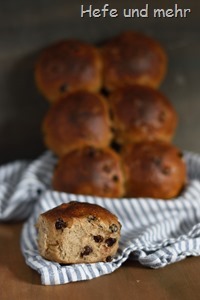
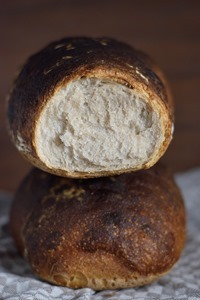
![Backkurs Holzbackofen 3[3] Backkurs Holzbackofen 3[3]](https://www.hefe-und-mehr.de/wp-content/uploads/2017/07/Backkurs-Holzbackofen-33.png)
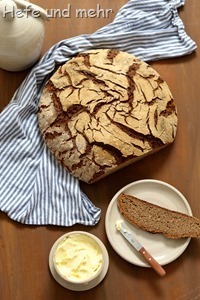
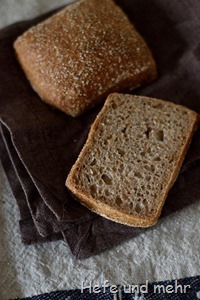
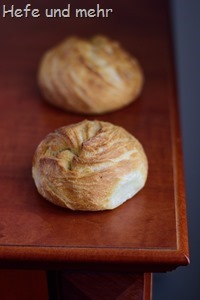
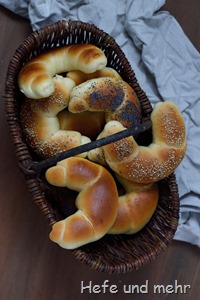 Some Weeks ago a reader send me a recipe asking if I could change it to less yeast and with the possibility to let the rolls proof overnight in the fridge. The recipe was – to use the famous words of Alfred Biolek – “interesting” as it contained not only a lot of yeast but baking powder as well. So it was not very surprisingly that the recipe yielded roll which taste not so good and get stale very fast.
Some Weeks ago a reader send me a recipe asking if I could change it to less yeast and with the possibility to let the rolls proof overnight in the fridge. The recipe was – to use the famous words of Alfred Biolek – “interesting” as it contained not only a lot of yeast but baking powder as well. So it was not very surprisingly that the recipe yielded roll which taste not so good and get stale very fast.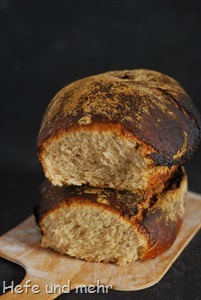 There are a lot of whishes’ for recipes for the bread baking course: the swabian “genetzes” Bread, Baguette, Bread with heirloom grains, yeasted cake, Westphalian Farmer Loaf, Sourdough and Sourdough breads, Salzstangerl, Bagel and Basler Brot. And there are still my personal wishes, a whole grain bread and a multi grain bread. We are not running out of recipes or ideas 🙂
There are a lot of whishes’ for recipes for the bread baking course: the swabian “genetzes” Bread, Baguette, Bread with heirloom grains, yeasted cake, Westphalian Farmer Loaf, Sourdough and Sourdough breads, Salzstangerl, Bagel and Basler Brot. And there are still my personal wishes, a whole grain bread and a multi grain bread. We are not running out of recipes or ideas 🙂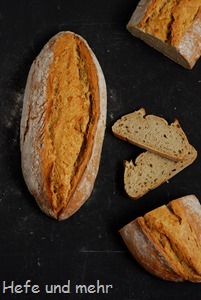 So here is now the promised Spelt bread. I know that many of the readers of this blog like to bake with spelt, but baking with spelt flour is a little bit more challenging then baking with wheat flour, so the recipe comes relatively late in my bread baking course.
So here is now the promised Spelt bread. I know that many of the readers of this blog like to bake with spelt, but baking with spelt flour is a little bit more challenging then baking with wheat flour, so the recipe comes relatively late in my bread baking course.